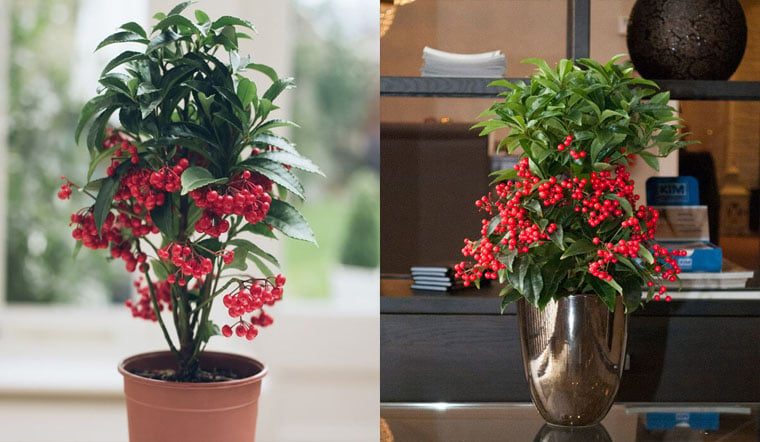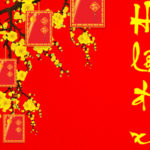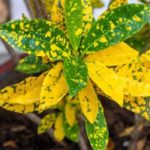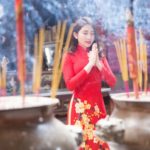The Significance of the Kim Ngan Luong Plant in Feng Shui
The Kim Ngan Luong, native to Japan and introduced to Vietnam in the 1800s, is a plant with a rich history and deep cultural significance. Also known as the “Trọng Đũa” or “Châu Sa Kim,” this plant captivates with its delicate, light pink blooms that dangle like inverted bells. The romantic hues and pleasant fragrance of these flowers create an enchanting atmosphere.

Kim Ngan Luong Plant
Beyond its aesthetic appeal, the Kim Ngan Luong holds profound meaning in Feng Shui. Its vibrant appearance symbolizes luck and prosperity, making it a popular choice for home decorations during the Tet holiday. The lush green leaves and bright red berries create a visually striking contrast, evoking a sense of abundance and warmth.
In Sino-Vietnamese, “kim” translates to gold or money, invoking associations with wealth and prosperity. Both the green leaves and red berries hold strong Feng Shui symbolism, representing affluence, harmony, and success. The Kim Ngan Luong is believed to bring good fortune, financial abundance, and motivation to its owners, inspiring them to strive for more.
According to Feng Shui principles, the color red signifies luck, and a bountiful harvest of berries represents prosperity. Therefore, the Kim Ngan Luong is considered a lucky plant, bringing positive energy to any space. During festive occasions, it is often adorned with red ribbons, strings, and gold coins to enhance its auspiciousness and bring good fortune for the new year. It is also believed to promote career advancement and business success.
The Kim Ngan Luong’s elegant beauty makes it a versatile decorative element for various spaces. The miniature version of this plant can be placed on desks, countertops, or stair shelves, while larger potted specimens are ideal for living rooms, company offices, and hotel lobbies. It is also commonly planted in factories, parks, and restaurants to add a touch of vibrant greenery to the surroundings.
Is the Kim Ngan Luong Plant Toxic?
A common concern regarding the Kim Ngan Luong is whether it is toxic. Fortunately, this plant is non-toxic and safe for humans. In fact, the young shoots of the plant are edible and can be used to prepare delicious and nutritious meals. Additionally, various parts of the plant are utilized in traditional medicine to treat ailments such as fever, diarrhea, and poor blood circulation.
While the berries of the Kim Ngan Luong are not known to be toxic, it is important to exercise caution with children. If any adverse reactions occur after ingestion, immediate medical attention should be sought. Although the plant is non-toxic, there is a lack of comprehensive scientific research on its long-term effects on human health, so it is always advisable to take precautionary measures to ensure the safety of oneself and one’s family.
Unveiling the Meaning Behind New Year’s Harvest: Tips for Having Luck in 2021
Celebrating the start of the New Year, many customs and traditions come together in a joyous expression of good fortune. From harvesting the new year’s fortune to praying for fortune and luck, the humanistic meaning behind these practices remains as relevant as ever. But what is the origin and how can we properly partake in the harvest of the new year? Read on to learn more about this fascinating custom.



































